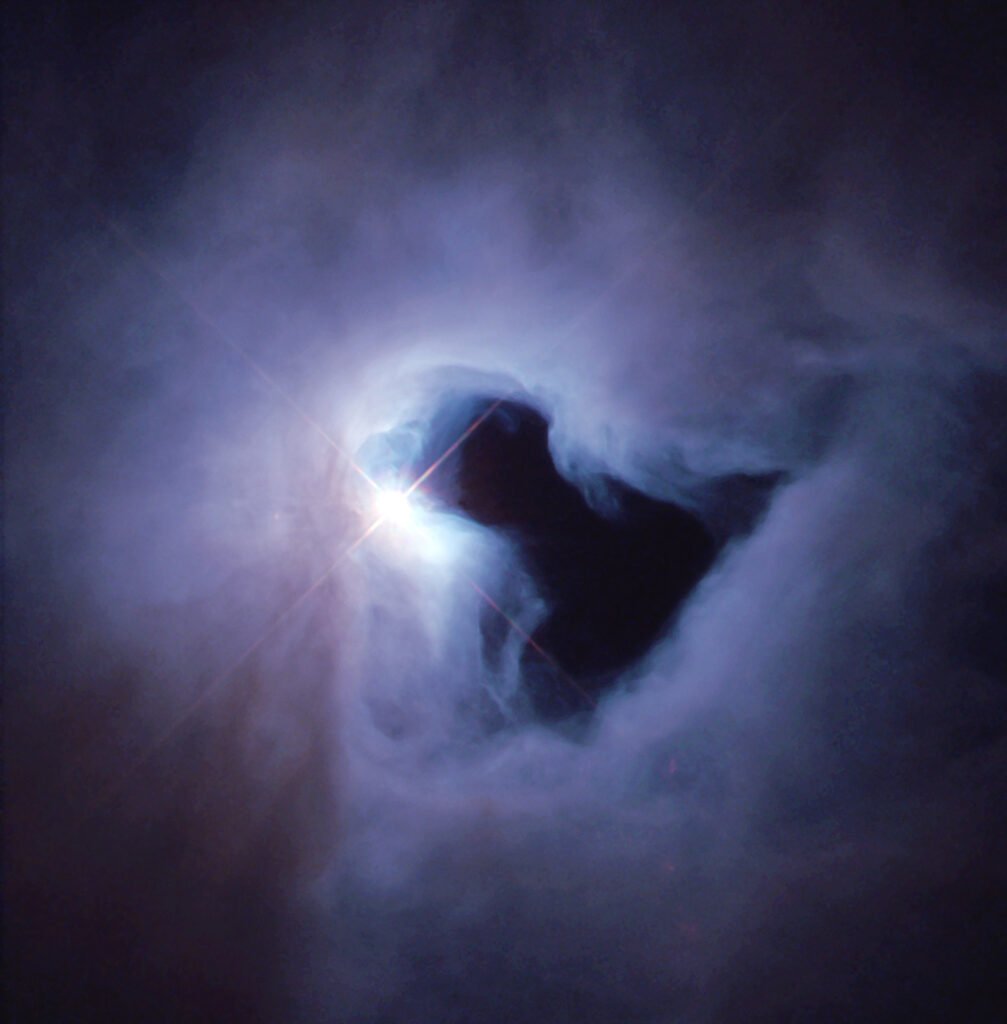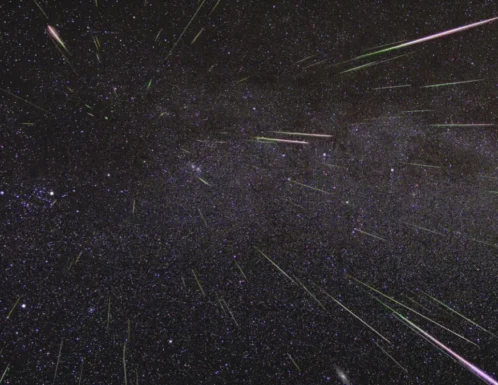Welcome to this month’s update to find out what’s in the night sky for December.
In the Elan Valley International Dark Sky Park, astronomical darkness lasts for a whopping 11 hours and 52 minutes at the beginning of the month from 17:58 and 12 hours and 4 minutes starting from 18:06 at the end. Plenty of time to practice getting to know the night sky with any astronomy-related Christmas goodies!

An all-sky view of the constellations from 10pm in December from in-the-sky.org
Low on the southern horizon, lies the faint constellation of Eridanus. Higher up above the south, lie the constellations of Taurus, Aries, Triangulum, Perseus and Cassiopeia. Westwards, the constellations of Andromeda and Pegasus begin to set, whilst the summer constellations of Cygnus, Lyra and Delphinus set in the west.
The constellations of Orion, Lepus, Auriga, Gemini and Monorceros begin to dominate the winter skies. Ursa Major and Ursa Minor are positioned low above the northern horizon.
The Full Moon occurs on 4th December and the New Moon on 20th December. The Full ‘Cold’ Moon this month is known as a Supermoon and is the last of three consecutive ones, being at its closest point to Earth in its elliptical orbit. Supermoons can be 14% – 30% larger and brighter than normal – however, the size isn’t perceptible to our eyes.
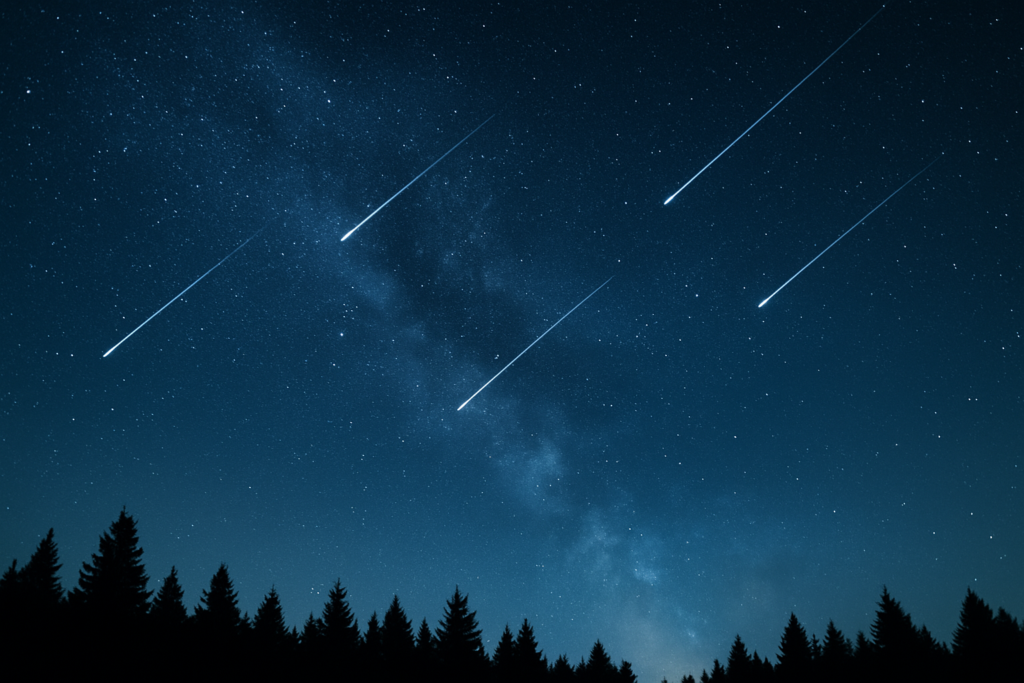
Geminid Meteor Shower
The second most spectacular meteor shower of the year is set to dazzle our December skies!
The Geminids Meteor Shower falls between 4th and 20th December, and peaks during the late night of 14th December.
Known to produce around 120 meteors during the peak, the meteors are fast, bright and colourful, lighting the sky up with red, green, white, yellow and blue shooting stars. Radiating from the constellation of Gemini, the shower is thought to originate from debris left by asteroid 3200 Phaethon. The 28% moon will be out of the way for most of the night, rising at 2.30am, which enables you to have the dark skies required to see the shooting stars.
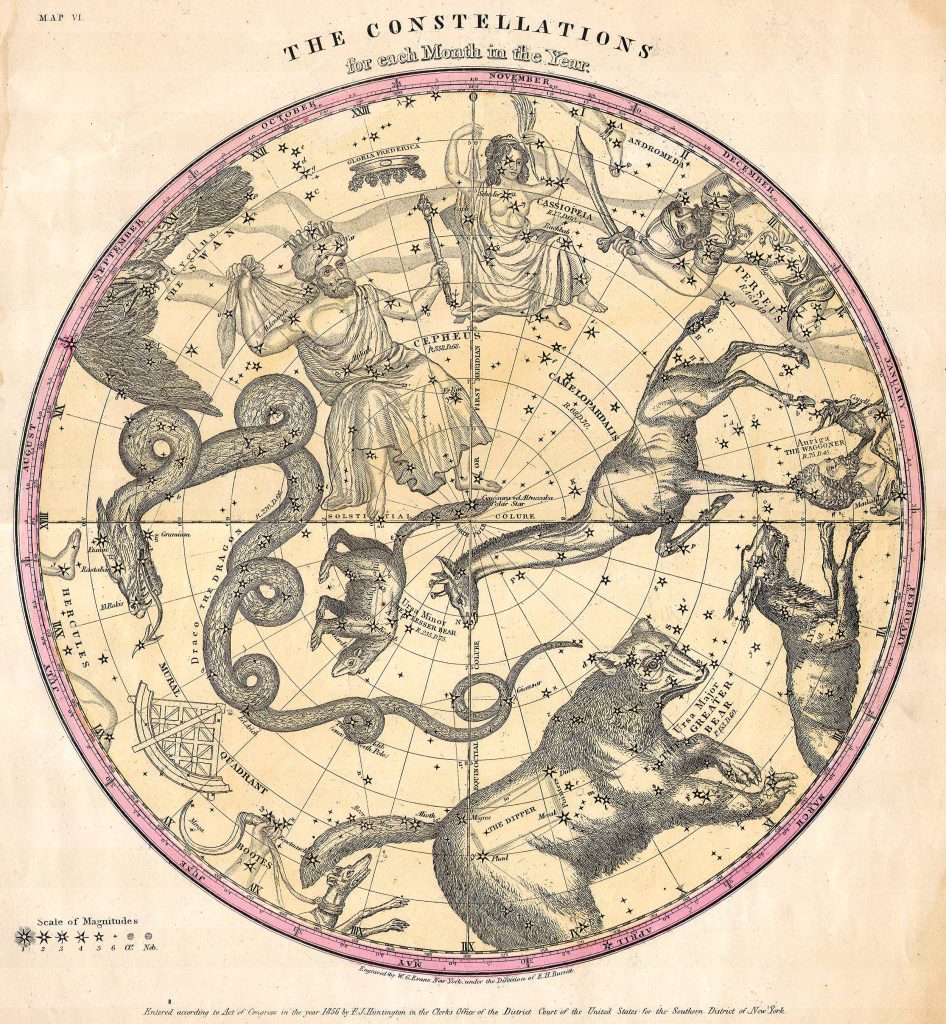
Constellation of the Month
Each month, we will feature a constellation and the mythology behind it.
There are 88 IAU recognised constellations in the night sky and around 36 that are observable in the northern hemisphere. Some of the names of the 88 IAU recognised constellations are several thousands of years old.
With the advent of science and rational thinking, and more of a focus on the observable world, stars are no longer used for the farming calendar, for navigation or conveying social or religious values.
Get outside and see if you can spot these constellations. The best time to see each constellation we feature is around 90 minutes after sunset.
Constellation of the month – Orion
The constellation of Orion is well-placed during the month of December. This constellation can be seen rising in the east as it gets dark and is well-placed at around 10pm. Look for a red star which is Betelgeuse and below it lies three bright stars in a line. This represents the belt of Orion and the three smaller, closely placed vertical stars hanging below the belt comprise his sword.
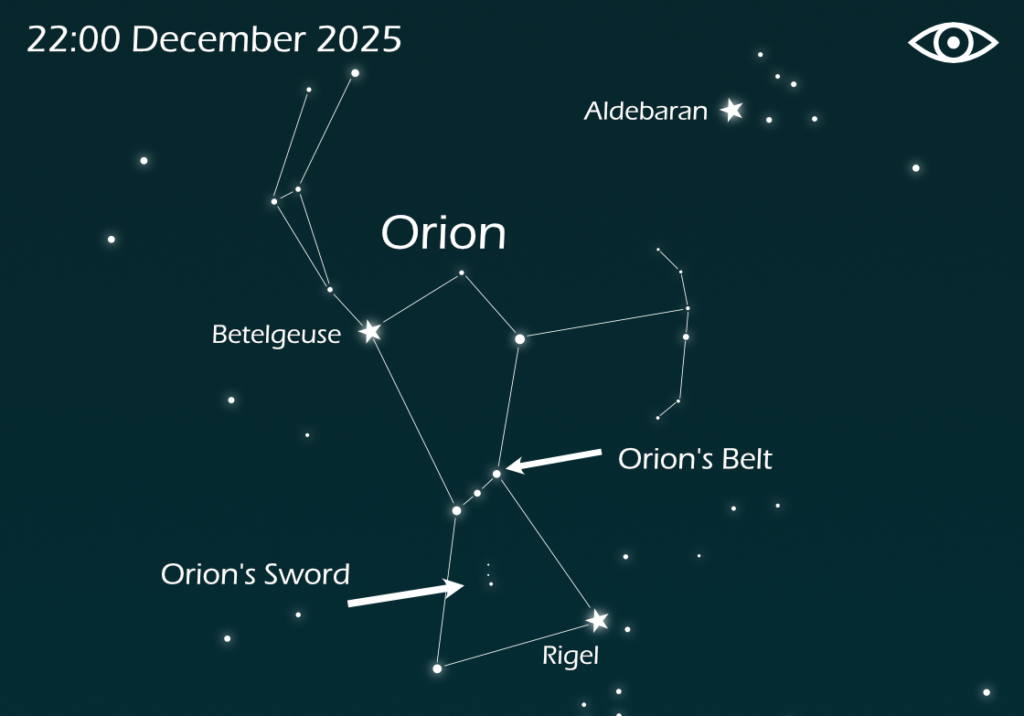
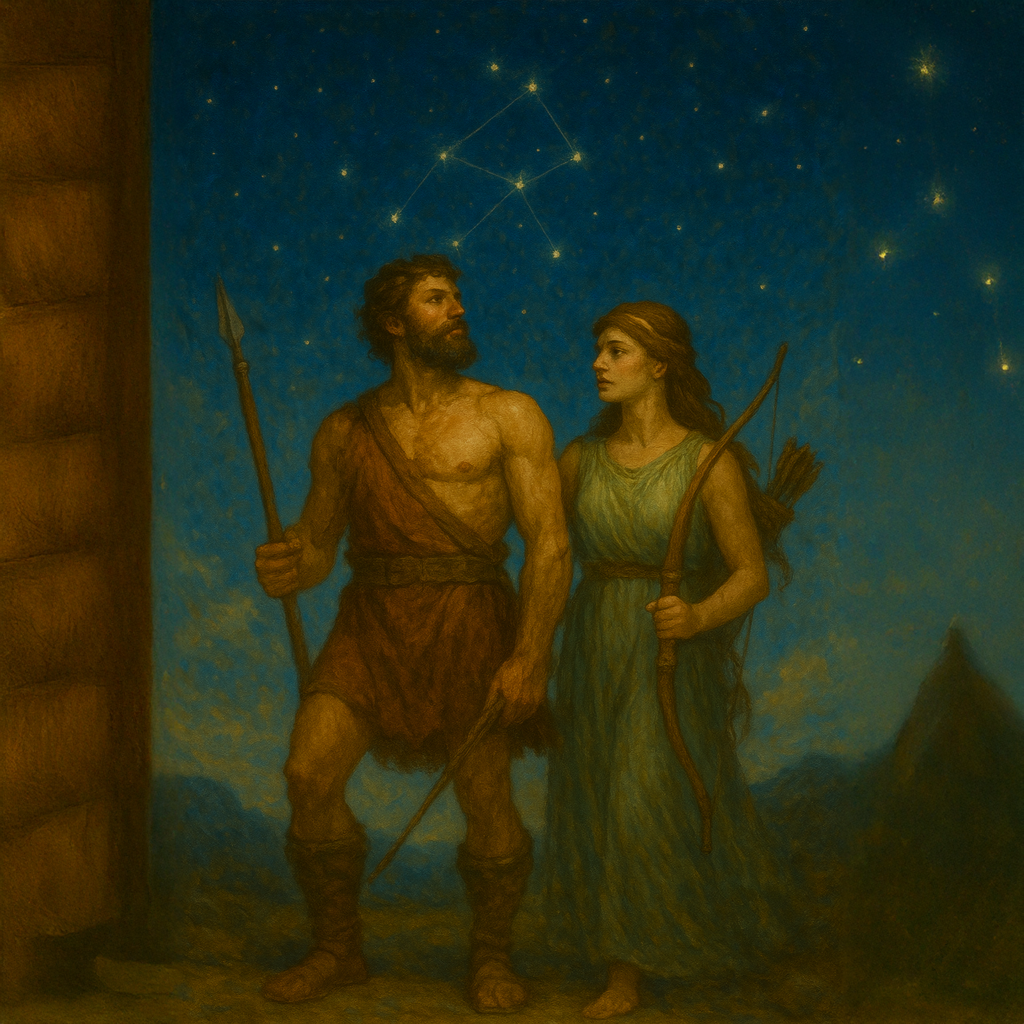
In Greek mythology, Orion represented the hunter, endowed with the ability to successfully hunt any living creature on earth, who was often accompanied by his friend Artemis, also a huntress. He often boasted of his skills and this eventually reached the ears of the goddess Gaia, who was alarmed that his success would result in the destruction of every animal on the planet.
To stop this disaster, she sent a scorpion to sting him. Orion was nearly overcome by the scorpion’s attack but survived by jumping into the sea and swimming away. Apollo saw Orion in the sea and pointed him out to Artemis, mistaking him for a black monster. She aimed her bow and arrow at the target and shot, not realising it was her friend Orion. Upon realising this, she begged the gods to bring him back to life but they didn’t grant this request. Wanting to take revenge, she departed to seek out and destroy the deadly scorpion.

The Treasures of Orion
The Orion Nebula is a showstopper this time of year and can overshadow other celestial treasures that are often overlooked. You need a telescope of around eight inches to see all objects but a smaller telescope will reveal all but one of them.
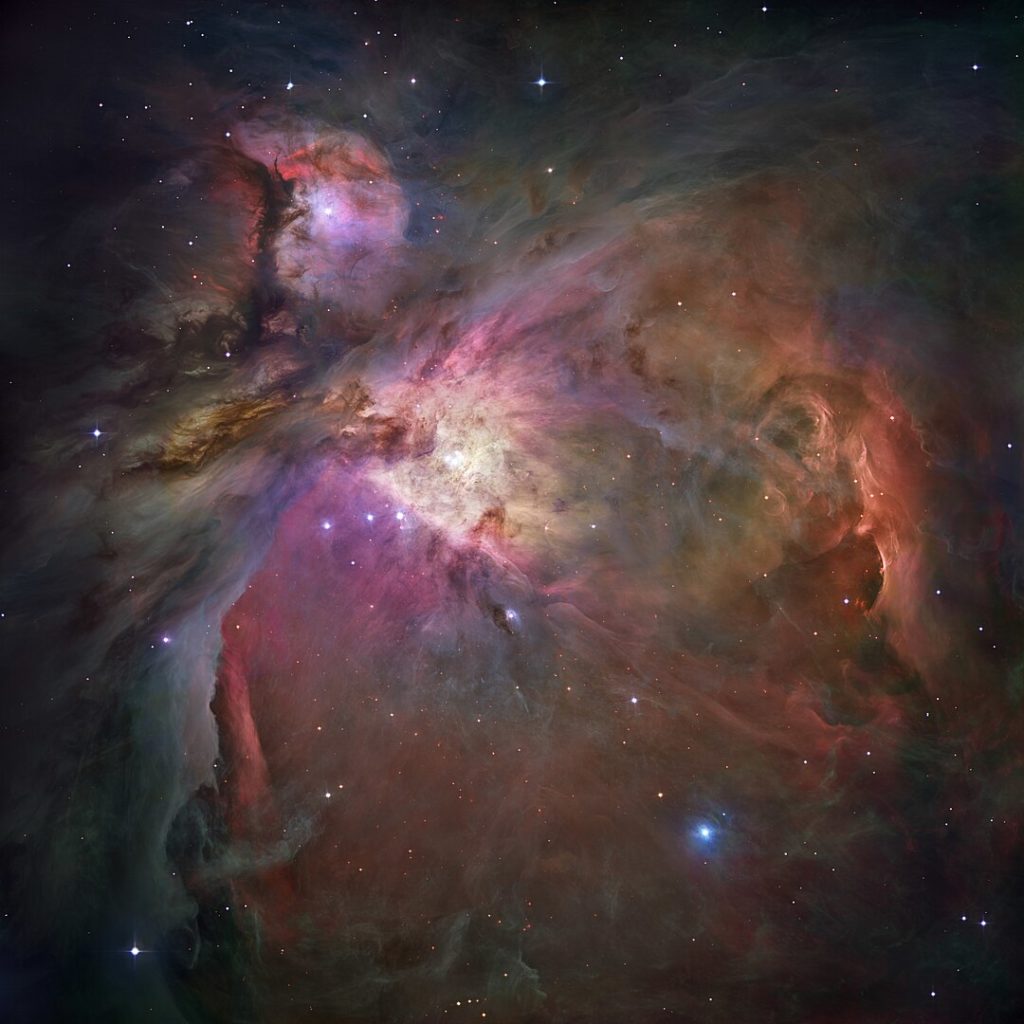
The Orion Nebula (M42)
Coordinates: RA 5h 35m 17s | Dec -5° 23′ 28″
Starting with the Orion Nebula (M42), this object can look incredible through a telescope, with its white streaks and swirls around a small cluster of stars in the centre called the Trapezium. Its overall shape resembles a cosmic flower in full bloom. This is one of the closest and largest stellar nurseries to us, lying 1,344 light years away. It has given birth to over 3000 stars, according to recent data.
Image credit: NASA, ESA, M. Robberto (Space Telescope Science Institute/ESA) and the Hubble Space Telescope Orion Treasury Project Team
The Running Man Nebula (NGC 1977)
Coordinates: RA 05h 35m 18s | Dec -04° 41’ 5”
Slightly north-west of the Orion Nebula, the Running Man Nebula (NGC 1977). An eight-inch telescope will reveal its nebulaic quality and an asterism of stars that resembles a stick fire with arms and legs flailing.
Image credit: NGC1977, by Adam Block CC BY-SA 4.0
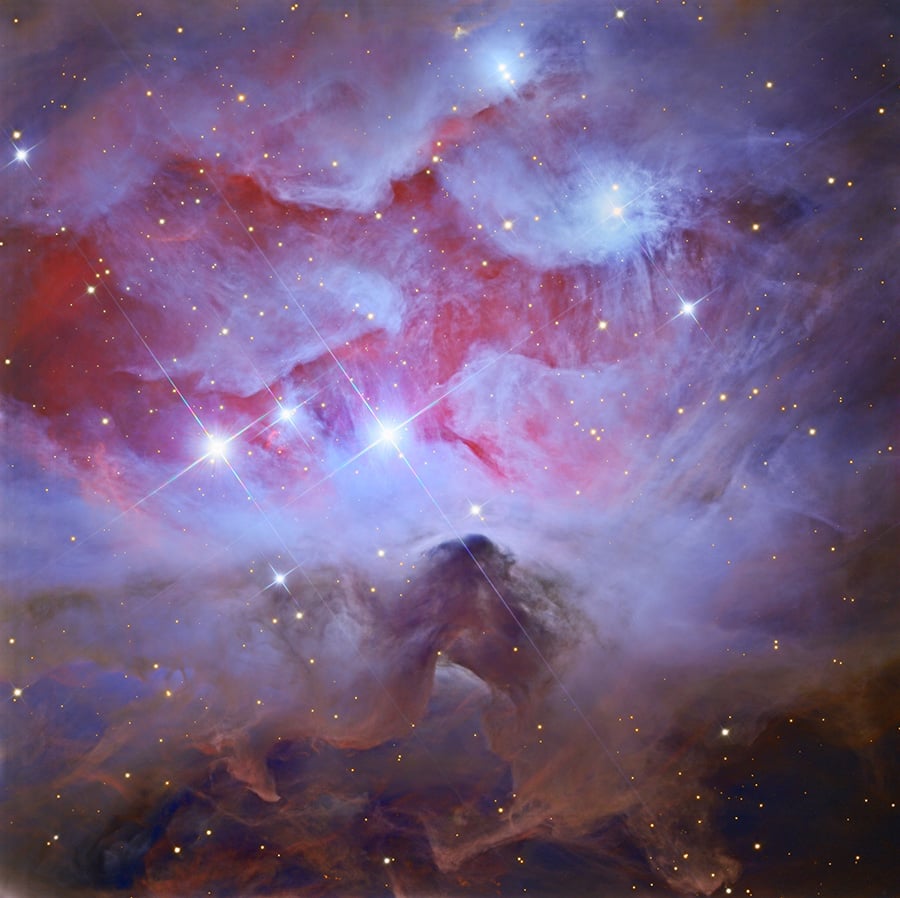
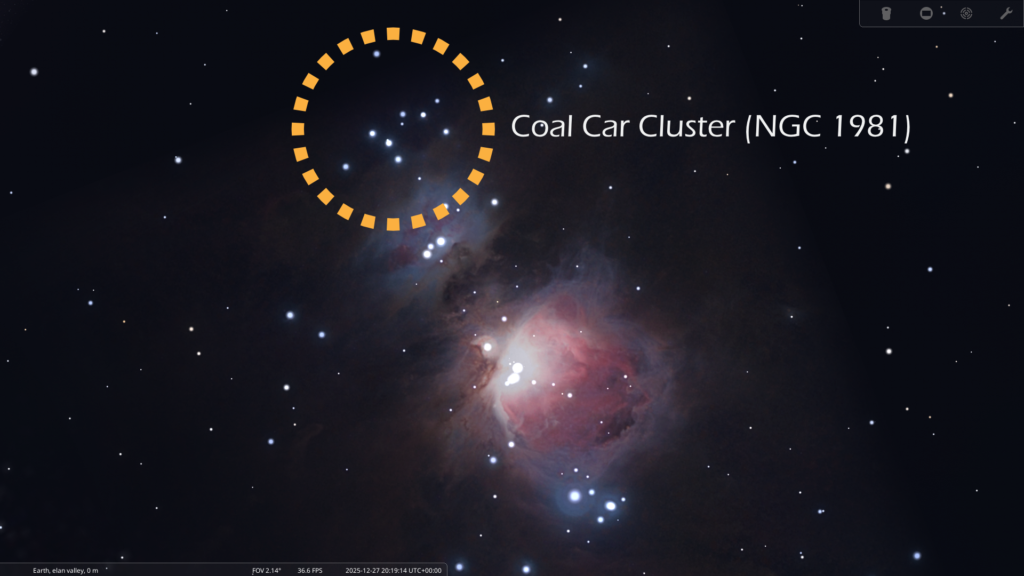
Coal Car Cluster (NGC 1981)
Coordinates: RA 05h 35m 09s | Dec -04° 25′ 30
Just above the Running Man Nebula lies the ‘Coal Car Cluster’ (NGC 1981), which is a small grouping of stars that resembles an old cart carrying coal. It seems to look more like a walking Crocodile!
Image: Stellarium with graphics added
The Cosmic Keyhole (NGC 1999)
Coordinates: RA: 5h 36m 27s | Dec -6° 43′ 18.0″
Finally, this final target requires a 12-inch telescope to see it. Known as the Cosmic Keyhole, it lies south of the Orion Nebula. Studying this in a dark sky may reveal the reflection nebula, with a keyhole-shaped void in the centre, which was caused by powerful jets of gas from a young star.
